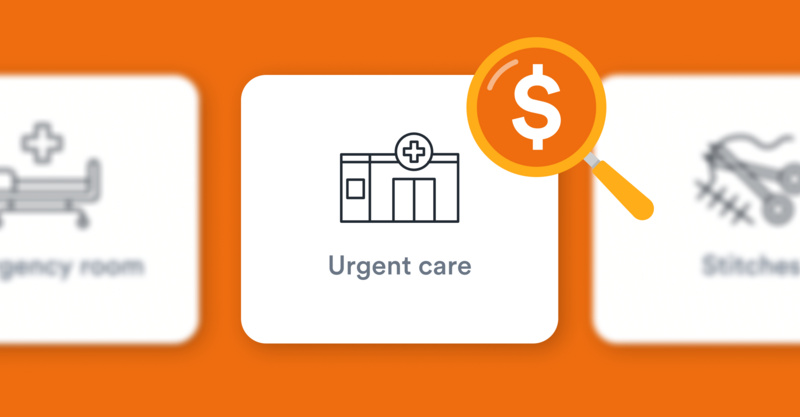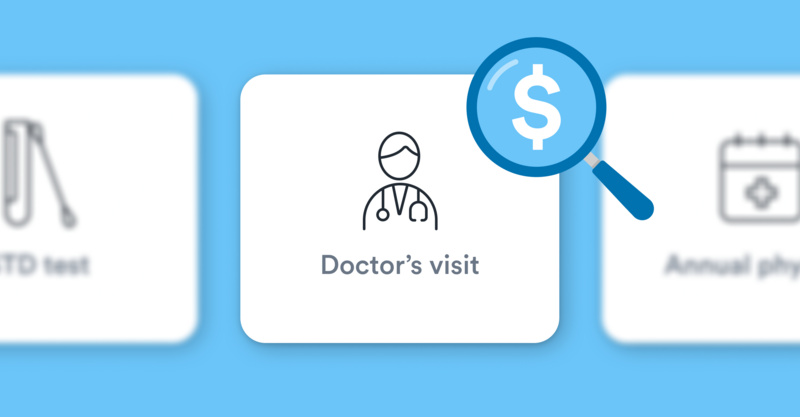Key Points
- If you don’t have health insurance, the average cost of a telemedicine visit will cost you about $79, based on data collected for Solv ClearPriceTM. That’s a savings of about $70 over what you would pay for an average in-person visit to an urgent care.
- The most significant factors impacting the cost of telemedicine are the length of your appointment, the services you require, and whether or not you have health insurance.
- A Solv Plus membership program gives you access to virtual medical providers who are available to you 24-hours a day, seven days a week, and in as little as15 minutes from your inquiry with one low price and no surprise bills.
During the COVID-19 pandemic, when most of the world was quarantined in the confines of their own homes, the use of telemedicine for healthcare increased dramatically. The Centers for Disease Control and Prevention (CDC) estimates that telemedicine visits increased by 154% during the last week of March 2020, compared to the same period a year earlier.1
Although the use of telemedicine has evened out as life returned to normal and people can go back into a doctor's office, there are still benefits to telemedicine, especially for those without health insurance.
In many cases, telemedicine visits are less expensive than in-person doctor visits. If you don’t have health insurance, the average cost of a telemedicine visit will cost you about $79, based on data collected for Solv ClearPriceTM. That’s a savings of about $70 over what you would pay for an average in-person visit to an urgent care. You may incur additional costs if you require prescriptions or lab tests.
What is telemedicine?
Telemedicine is basically a virtual visit to the doctor’s office. In the video appointment on a computer, phone, or tablet, you meet with a physician or nurse who can diagnose your condition, suggest treatment options, and monitor your progress.
Telemedicine is often confused with telehealth, but the two are separate concepts. According to the American Academy of Family Physicians, “telemedicine” is the practice of using technology to deliver care from a distance. Meanwhile, “telehealth” is a broader scope of using electronic and telecommunications for remote health care services that can apply to non-clinical services like medical training and administrative meetings.
According to the American Academy of Family Physicians, telemedicine visits can be used for several primary and urgent care services, including:
- Asthma
- Colds and flu
- Diabetes
- Migraines
- Skin irritations
- Thyroid issues
- Urinary tract infections
You can even use telemedicine for mental health visits with psychologists, psychiatrists, and social workers.
What factors impact the cost of telemedicine?
There is no set, one-size-fits-all cost for telemedicine services. Your price can fluctuate depending on several different factors. The most significant factors impacting the cost of telemedicine are the length of your appointment, the services you require, and whether or not you have health insurance, notes Solv’s Chief Medical Officer, Dr. Rob Rohatsch, .
Appointment length
You can’t keep the doctor on the line for 30 minutes and expect to pay the minimum cost for your telemedicine visit. Time is money, and the longer your telemedicine appointment lasts, the more it will cost you. The average telemedicine appointment usually takes about 15 minutes, according to internal data from Solv.
Required services
Your cost for telemedicine could increase if you require additional services such as testing or prescriptions. Most of the time, tests your doctor recommends while on a telemedicine visit would typically be done in person. If you are using telemedicine to manage a chronic condition such as diabetes or arthritis, you also may pay more for the service because you’ll need more appointments.
Health insurance
If you have health insurance, your cost for telemedicine may be less than it is for someone without health insurance. That is, of course, if your health insurance provider covers telemedicine appointments and if they charge a copay or not for a visit.
When should you use telemedicine?
Telemedicine may be a good first step in diagnosing your illness. For example, if you’ve been feeling under the weather for several days, you can schedule a virtual visit with your physician and explain your symptoms. Your doctor may be able to determine a diagnosis right then and there. Or, they can assess your symptoms and recommend follow-up treatment such as lab tests, prescriptions, x-rays, biopsies, or referrals to a specialist. This can save you time and money on visits to the doctor's office, urgent care, or the emergency room.
Telemedicine may also be an option for for follow-up appointments where your doctor can monitor your progress and recovery. This is especially helpful for patients with chronic conditions such as asthma, diabetes, cancer, or arthritis.
When shouldn’t you use telemedicine?
There are some occasions where a telemedicine visit isn’t appropriate given the nature of your symptoms, and you’ll need to see a doctor in person. For example, if you cut yourself and require stitches, you’ll have to go to the doctor, urgent care, or emergency room for care. However, if the cut isn’t severe, you could use telemedicine to assess the injury to determine if a trip to urgent care for stitches is necessary.
What are the benefits of telemedicine?
A couple of the main benefits of telemedicine are that it can save you time and money. Telemedicine appointments are a fraction of the cost of an in-person office visit or a visit to an urgent care clinic, according to Solv’s internal ClearPriceTM data. You may also save money on transportation costs you would incur to receive healthcare in person.
Time is another valuable resource you can save using telemedicine. An in-person healthcare appointment typically takes about an hour and 30 minutes out of your day. You have to take time off work or rearrange your schedule, and you’ll probably spend some time in the waiting room before the doctor is ready to see you.
In comparison, as noted previously, the average telemedicine visit lasts about 15 minutes. Telemedicine enables you to be more flexible with your time. You can meet with your physician while you’re home with the kids or sitting at your desk at work. The ability to talk to your doctor virtually out of the comforts of your own space also helps protect others if your illness is contagious, notes the CDC
How Solv can help you find telemedicine care
Telemedicine offers a great way to save time and money on your healthcare, which is why it is becoming the preferred way to access healthcare for many people. According to the 2021 State of Healthcare Report by the Healthcare Information and Management Systems Society (HIMSS), about two out of three patients say they prefer the convenience of telehealth over in-office visits.
Solv’s telehealth services providers can help you assess your injury or illness to determine if you need to go to an urgent care clinic and then get you connected with referrals and follow-up appointments.
Frequently asked questions
What is telemedicine and how did its use change during the COVID-19 pandemic?
Telemedicine is a virtual visit to a doctor’s office where a physician or nurse can diagnose your condition, suggest treatment options, and monitor your progress. During the COVID-19 pandemic, when most people were quarantined at home, the use of telemedicine for healthcare increased dramatically. The CDC estimates that telemedicine visits increased by 154% during the last week of March 2020, compared to the same period a year earlier.What is the difference between telemedicine and telehealth?
Telemedicine is the practice of using technology to deliver care from a distance. Telehealth, on the other hand, is a broader concept that includes using electronic and telecommunications for remote health care services, which can also apply to non-clinical services like medical training and administrative meetings.What types of conditions can be treated through telemedicine?
Telemedicine visits can be used for several primary and urgent care services, including asthma, colds and flu, diabetes, migraines, skin irritations, thyroid issues, and urinary tract infections. Telemedicine can also be used for mental health visits with psychologists, psychiatrists, and social workers.What factors impact the cost of telemedicine?
The cost of telemedicine services can fluctuate depending on several factors. The most significant factors are the length of your appointment, the services you require, and whether or not you have health insurance.When is it appropriate to use telemedicine?
Telemedicine may be a good first step in diagnosing your illness. It can also be an option for follow-up appointments where your doctor can monitor your progress and recovery. This is especially helpful for patients with chronic conditions such as asthma, diabetes, cancer, or arthritis.When should you not use telemedicine?
There are some occasions where a telemedicine visit isn’t appropriate given the nature of your symptoms, and you’ll need to see a doctor in person. For example, if you cut yourself and require stitches, you’ll have to go to the doctor, urgent care, or emergency room for care.What are the benefits of telemedicine?
Telemedicine can save you time and money. Telemedicine appointments are a fraction of the cost of an in-person office visit or a visit to an urgent care clinic. An in-person healthcare appointment typically takes about an hour and 30 minutes out of your day, while the average telemedicine visit lasts about 15 minutes.How can Solv help with telemedicine care?
Solv’s telehealth services providers can help you assess your injury or illness to determine if you need to go to an urgent care clinic and then get you connected with referrals and follow-up appointments.
Solv has strict sourcing guidelines and relies on peer-reviewed studies, academic research institutions, and medical associations. We avoid using tertiary references.


 LinkedIn
LinkedIn










